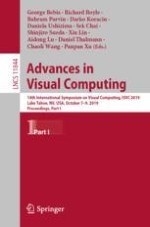2019 | OriginalPaper | Buchkapitel
An Automatic Digital Terrain Generation Technique for Terrestrial Sensing and Virtual Reality Applications
verfasst von : Lee Easson, Alireza Tavakkoli, Jonathan Greenberg
Erschienen in: Advances in Visual Computing
Aktivieren Sie unsere intelligente Suche, um passende Fachinhalte oder Patente zu finden.
Wählen Sie Textabschnitte aus um mit Künstlicher Intelligenz passenden Patente zu finden. powered by
Markieren Sie Textabschnitte, um KI-gestützt weitere passende Inhalte zu finden. powered by
